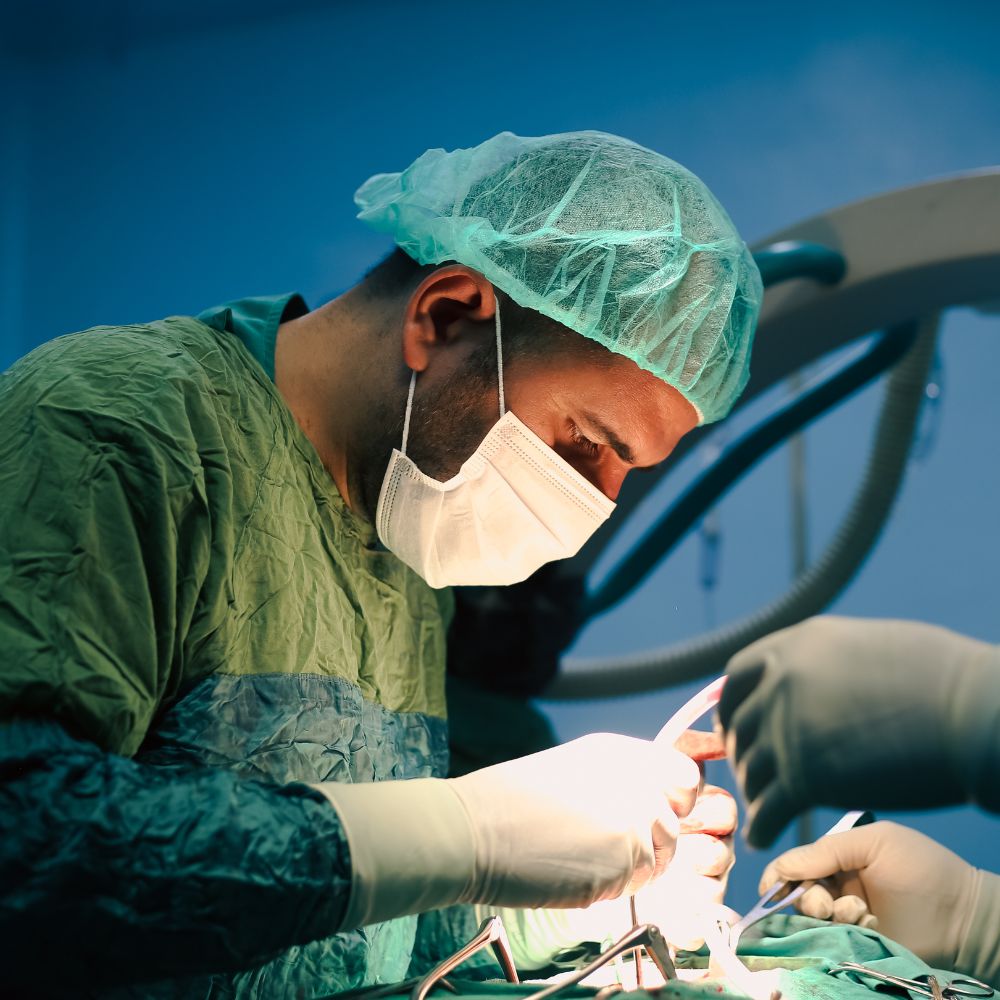Appendix surgery, also known as appendectomy, is a common surgical procedure performed to remove the appendix. The appendix, a small, tube-like organ attached to the large intestine, can become inflamed or infected, leading to a condition known as appendicitis. This article provides a comprehensive overview, including its indications, types of procedures, preparation, recovery, and potential complications. By understanding the intricacies of appendix surgery, patients and healthcare professionals can make informed decisions about managing appendicitis and ensuring optimal outcomes.
What is Appendix Surgery?
Appendix surgery, or appendectomy, involves the removal of the appendix, usually due to appendicitis. Appendicitis is an inflammation of the appendix, often caused by an obstruction or infection. If left untreated, appendicitis can lead to serious complications, such as a ruptured appendix, which can be life-threatening. It is a well-established treatment for this condition and is typically performed as an emergency procedure.
Indications for Appendix Surgery
The primary indication for appendix surgery is appendicitis. Symptoms of appendicitis may include:
- Abdominal Pain: Often starting around the navel and then shifting to the lower right abdomen.
- Nausea and Vomiting: Accompanied by loss of appetite.
- Fever: Mild to moderate fever often accompanies appendicitis.
- Changes in Bowel Habits: Such as constipation or diarrhea.
In some cases, appendix surgery may also be performed for other reasons, such as:
- Prevention: In certain high-risk situations where appendicitis is anticipated or suspected.
- Diagnosing Unexplained Abdominal Pain: When other diagnostic methods are inconclusive.
Types of Appendix Surgery

There are two primary types of appendix surgery:
1. Open Appendectomy
This is the traditional approach, where a larger incision is made in the lower right abdomen to remove the appendix. It is often used when the appendix has ruptured or when there are other complications.
2. Laparoscopic Appendectomy
This minimally invasive technique involves several small incisions and the use of a camera and specialized instruments to remove the appendix. Laparoscopic appendectomy generally results in less postoperative pain, quicker recovery, and minimal scarring compared to open appendectomy.
3. Open Appendectomy
Open appendectomy involves making a larger incision in the lower right abdomen to access and remove the appendix. The procedure typically lasts between 30 minutes to 1 hour. It is often chosen when:
- The appendix has ruptured, causing widespread infection.
- There is a significant amount of scar tissue from previous surgeries.
- The patient has a high body mass index (BMI) that makes laparoscopic surgery challenging.
Laparoscopic Appendectomy
Laparoscopic appendectomy is a less invasive procedure that uses several small incisions and a laparoscope (a thin tube with a camera) to guide the removal of the appendix. The benefits of laparoscopic appendectomy include:
- Reduced Pain: Smaller incisions generally result in less postoperative pain.
- Shorter Recovery Time: Patients often experience a quicker return to normal activities.
- Minimal Scarring: The smaller incisions lead to less noticeable scarring.
Preparing for Appendix Surgery
Proper preparation is crucial for the success of appendix surgery and the recovery process. Preparation involves several key steps:
1. Preoperative Assessment
Before undergoing appendix surgery, patients will undergo a thorough assessment, including:
- Medical History Review: To identify any pre-existing conditions that could affect surgery.
- Physical Examination: To evaluate the severity of appendicitis and overall health.
- Diagnostic Tests: Such as blood tests, imaging studies (e.g., ultrasound or CT scan), and urinalysis to confirm the diagnosis and rule out other conditions.
2. Fasting and Medication

Patients are typically advised to fast for several hours before surgery to ensure an empty stomach. This reduces the risk of complications related to anesthesia. Additionally, patients should inform their healthcare provider of all medications and supplements they are taking, as certain medications may need to be adjusted or temporarily discontinued.
3. Anesthesia
Appendix surgery is performed under general anesthesia, which means the patient will be asleep and unaware during the procedure. Anesthesia is administered by an anesthesiologist or nurse anesthetist, who monitors the patient’s vital signs throughout the surgery.
The Appendix Surgery Procedure
The procedure varies depending on the type of surgery being performed.
1. Open Appendectomy Procedure
- Incision: A larger incision is made in the lower right abdomen.
- Accessing the Appendix: The surgeon carefully removes the inflamed appendix.
- Closure: The incision is closed with sutures or staples.
2. Laparoscopic Appendectomy Procedure
- Incisions: Several small incisions are made in the abdomen.
- Insertion of Laparoscope: A laparoscope and other surgical instruments are inserted through the incisions.
- Removal of Appendix: The surgeon removes the appendix using the instruments, guided by the camera.
- Closure: The small incisions are closed with sutures or adhesive strips.
Postoperative Care and Recovery
Postoperative care is essential for a smooth recovery after appendix surgery. The recovery process involves several key aspects:
1. Hospital Stay
Most patients can expect to stay in the hospital for 1 to 2 days after appendix surgery, depending on the type of procedure and the presence of any complications. Patients will be monitored for signs of infection or other issues and provided with pain management and antibiotics as needed.
2. Pain Management

Pain management is a critical part of recovery. Patients may experience some discomfort following surgery, which can be managed with prescribed pain medications and over-the-counter pain relievers. For laparoscopic appendectomy, pain is usually less severe compared to open appendectomy.
3. Wound Care
Proper wound care is essential to prevent infection and promote healing. Patients should follow their surgeon’s instructions regarding wound care, including keeping the area clean and dry and avoiding activities that could strain the incisions.
4. Activity and Diet
Patients are generally advised to start with a light diet and gradually return to their normal diet as tolerated. Physical activity should be limited in the initial recovery phase to avoid strain on the surgical site. Light activities such as walking are encouraged, but strenuous exercises and heavy lifting should be avoided until the surgeon gives clearance.
Also Read: What Does a Surgical Technologist Do?
Potential Complications
While appendix surgery is generally safe, it is important to be aware of potential complications. These may include:
- Infection: At the surgical site or within the abdomen.
- Bleeding: Either internally or externally.
- Adhesions: Scar tissue that can form after surgery and potentially cause bowel obstructions.
- Injury to Nearby Organs: Rare, but possible during surgery.
Patients should promptly report any unusual symptoms, such as severe pain, fever, or signs of infection, to their healthcare provider.
Long-Term Outlook
The long-term outlook for patients who undergo appendix surgery is generally excellent. Most individuals recover fully and return to their normal activities within a few weeks. Appendectomy does not typically result in long-term complications or impact overall health.
Conclusion
Appendix surgery, or appendectomy, is a common and effective treatment for appendicitis, a potentially serious condition. Whether performed via open or laparoscopic techniques, the procedure aims to alleviate symptoms, prevent complications, and restore health. Understanding the indications, types of surgery, preparation, recovery, and potential complications associated with appendix surgery helps patients and healthcare providers make informed decisions. With appropriate care and follow-up, most patients recover successfully and return to their normal lives with minimal disruption.
Also Read: Why Robotic Surgery Business Takes a Boom in 2024?







